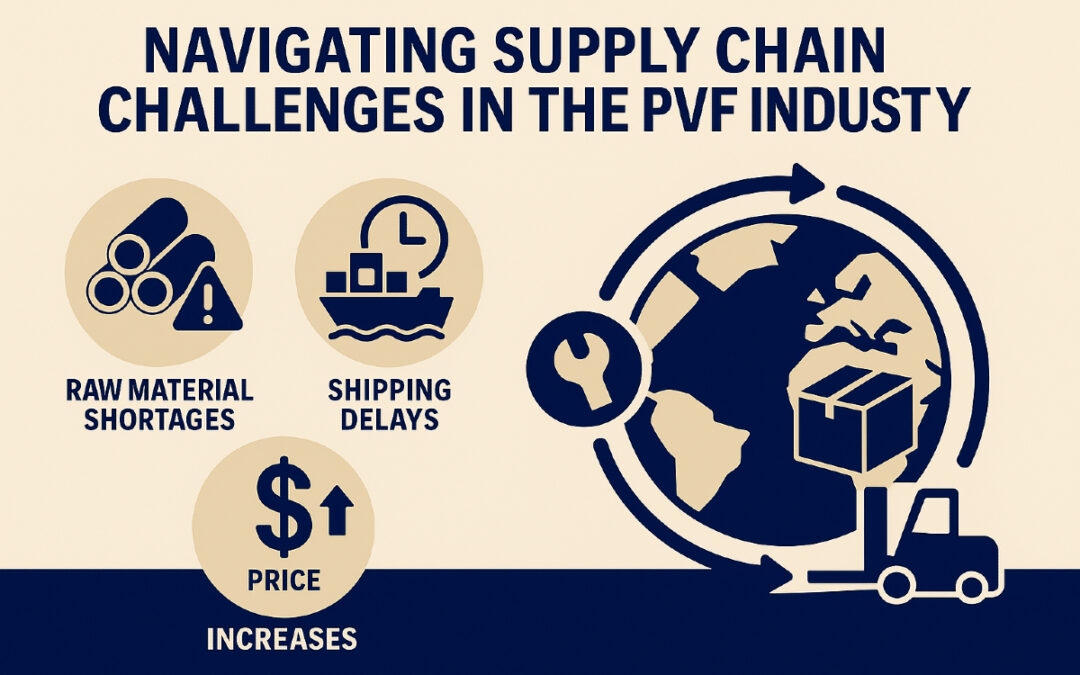Introduction
The pipe, valve, and fitting (PVF) industry has been facing significant supply chain challenges since the onset of the COVID-19 pandemic. Understanding these issues and adapting to them is crucial for distributors and manufacturers alike. Here’s an overview of the current supply chain landscape and strategies to navigate these obstacles.
Supply Chain Disruptions
The PVF industry has been hit by several supply chain disruptions, including:
- Raw Material Shortages: Essential materials like steel have been in short supply, causing price increases. For example, steel prices rose by $60 per ton in September 2023.
- Shipping Delays: The cost of shipping containers has surged dramatically, with transportation from Asia to Los Angeles now costing six times more than a year ago.
- Price Increases: Major manufacturers have raised prices, with tubular products seeing a 20% increase and carbon steel butt-welding fittings going up by about 10%.
- Labor Shortages: Both skilled and unskilled labor shortages continue to impact production and distribution.
Adapting to the New Normal
Despite these challenges, the PVF industry is finding ways to adapt:
- Inventory Management: Maintaining strict inventory levels to prevent further disruptions.
- Domestic Production: Increasing interest in sourcing 100% domestic products to mitigate risks associated with international supply chains.
- Resilient Supply Chains: Developing more resilient supply chains by diversifying suppliers and increasing local sourcing where possible.
Positive Signs Amidst Challenges
While the road to recovery is long, there are positive signs. Certain products, particularly those related to frac and drilling, are showing renewed demand. Items that experienced inventory shortages at the end of 2020 are beginning to recover as manufacturers ramp up production.
Strategies for Success
To navigate these supply chain challenges, consider these strategies:
- Diversify Suppliers: Reducing reliance on a single supplier can help mitigate risks associated with supply chain disruptions.
- Invest in Technology: Implementing advanced inventory management systems and predictive analytics can optimize stock levels and anticipate demand fluctuations.
- Strengthen Relationships: Building strong relationships with suppliers and logistics providers can enhance communication and improve supply chain resilience.
- Focus on Quality: Ensuring high-quality products can reduce returns and improve customer satisfaction, even in challenging times.
Conclusion
The PVF industry continues to face significant supply chain challenges, but it can navigate these obstacles with strategic adaptations and a focus on resilience. By understanding these dynamics and implementing effective strategies, we can continue to support our customers with reliable and high-quality pipe, valve, and fitting solutions.
